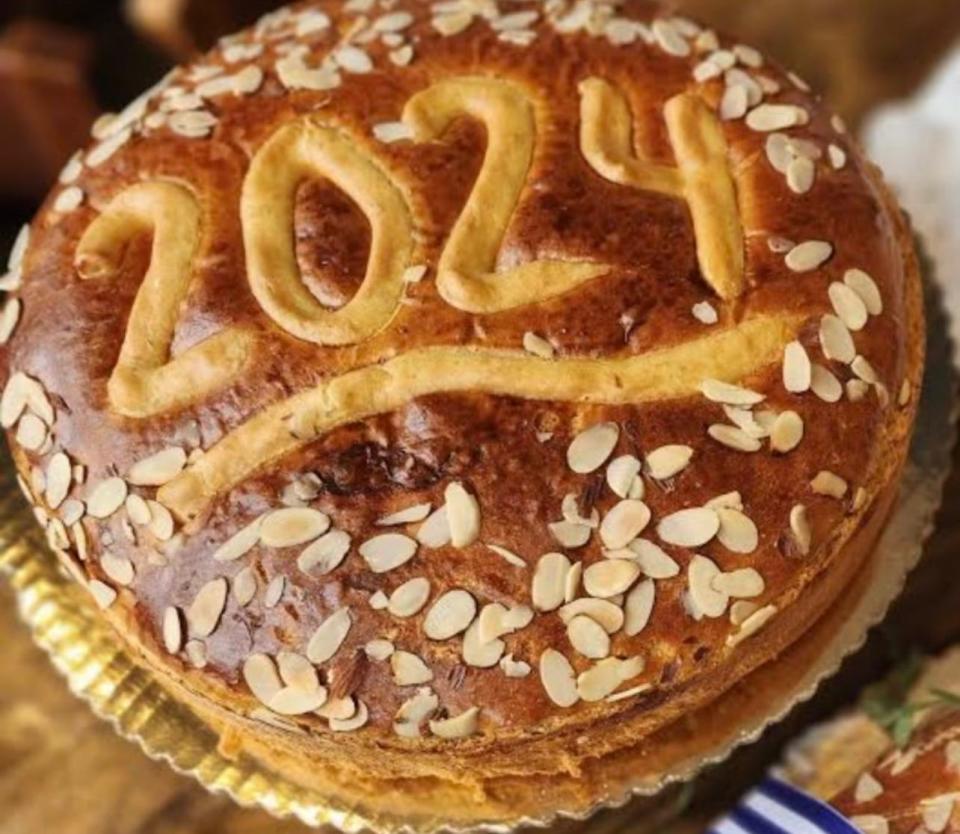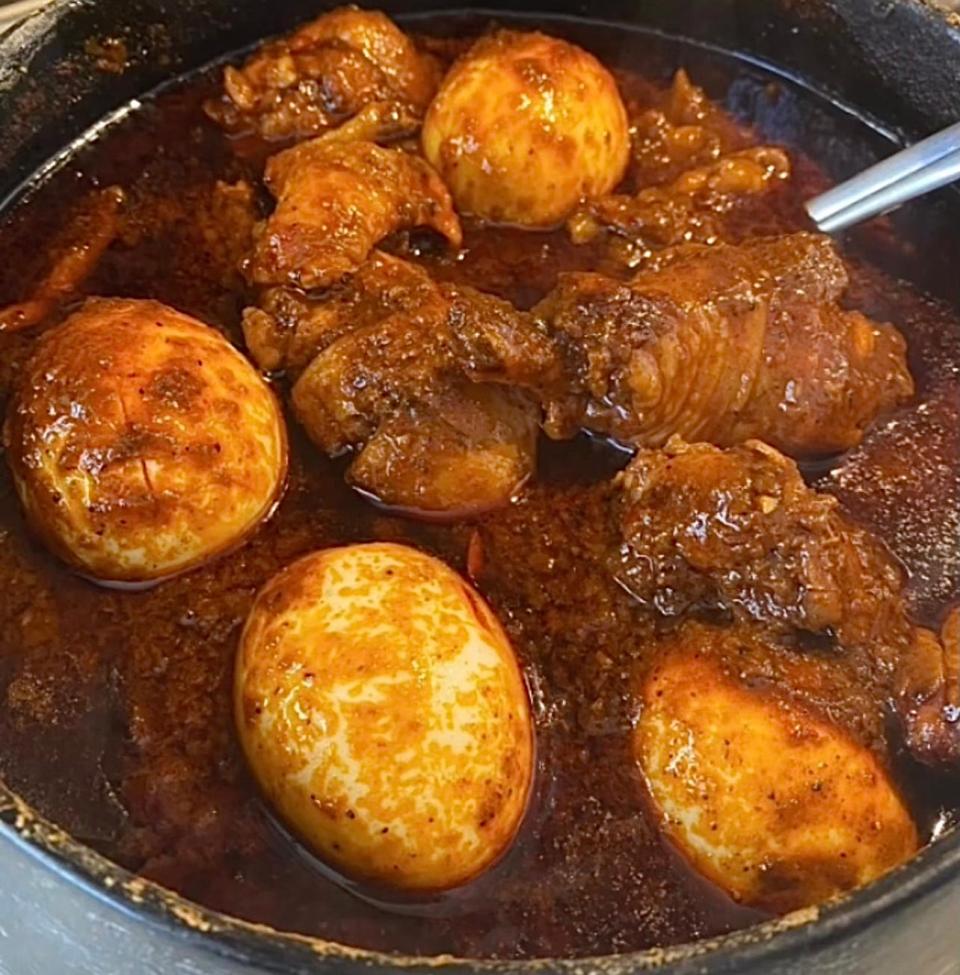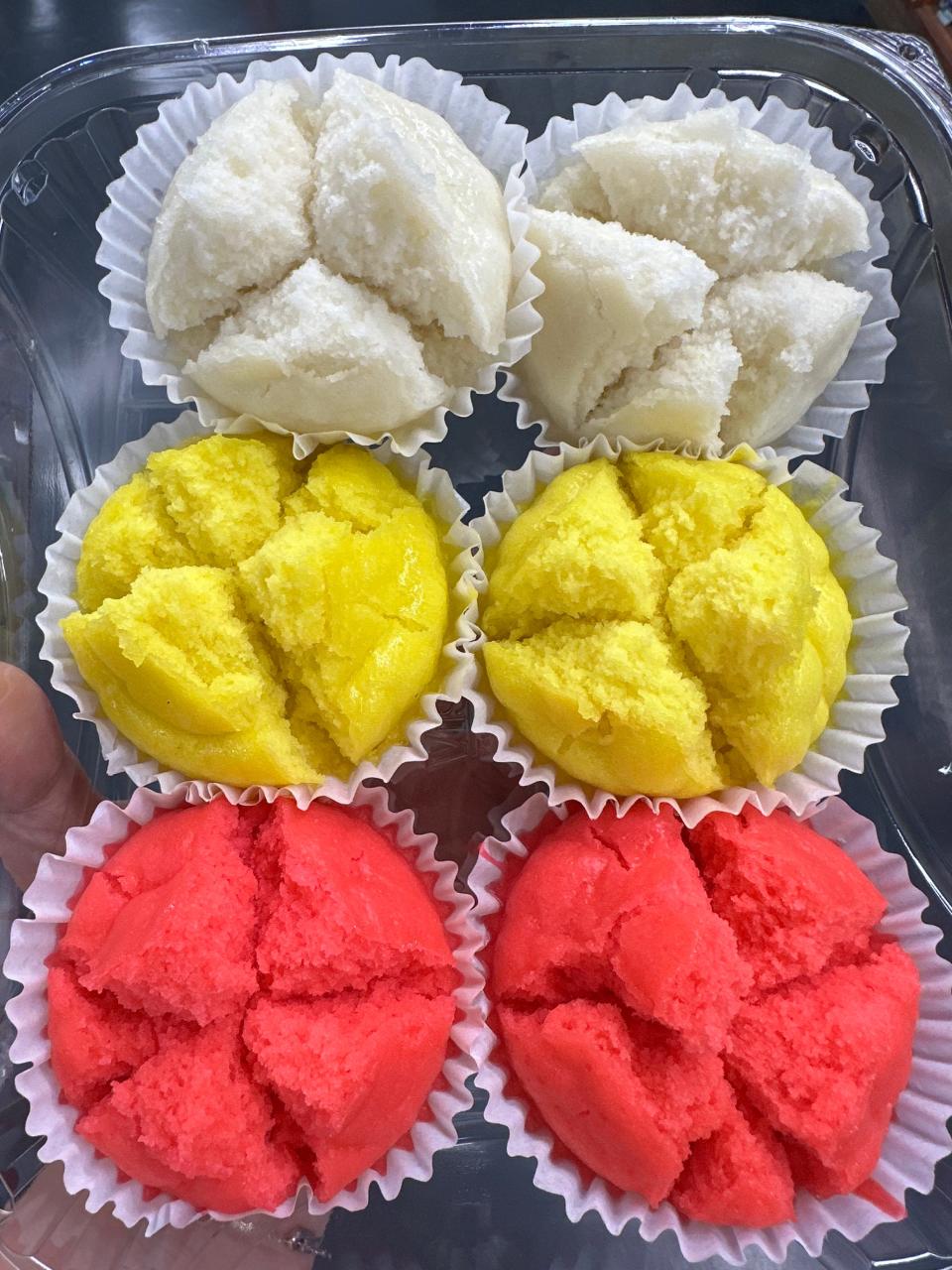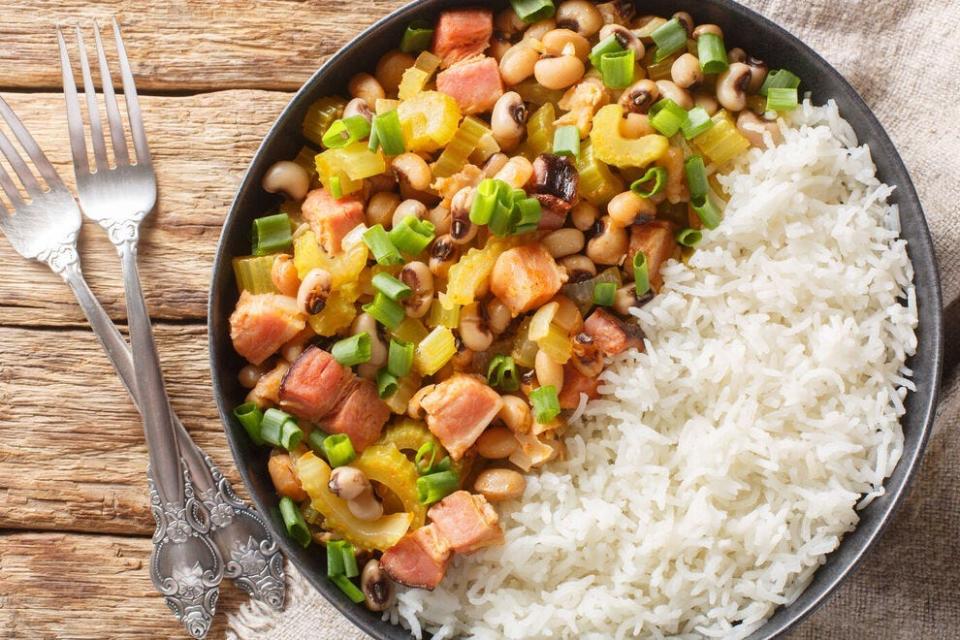From banging pans to making sweet breads, here's how NJ families will ring in 2024
On Dec. 31, many of us will celebrate with parties, noisemakers and plenty of bubbly. But for some cultures, New Year's Day celebrations can look a little different.
Many of these traditions feature food — from a spicy chicken stew to Chinese fortune cakes to Three Kings Day bread — and can be seen all around New Jersey.
There is one similarity, though: The new year represents a new start, a chance at new fortune, new perspectives, and hopefully some good luck.
Here's to a happy and healthy 2024!
More: We can't wait to try these 15 restaurants opening at the Jersey Shore in 2024
Smashing pomegranates and vasilopita

Some Greek families bring their family luck, prosperity and fertility by smashing a pomegranate on New Year's Day. The tradition dates back to ancient Greece, according to the nonprofit Greek platform XPAT Athens: The more seeds that spring out, the more good fortune will come to the house.
Bobby Bournias, owner of the Brownstone Pancake Factory in Freehold Township, Brick and Edgewater, celebrates a different Greek tradition.
"For New Year's, we make a round, sweet bread (similar to challah) called vasilopita that brings good luck to the home and family," he said. "(Before) it's baked, a hidden coin is placed in the dough so it will bake inside."
On New Year's Day, we (slice) the bread for each family member in order of age from eldest to youngest," he said. "Whoever has the coin in their slice receives good luck for the year."
Also for the holiday, Bournias said his family also has a tradition of making French toast or bread pudding.
Holiday foods: We love to eat this time of year, but what's behind traditional holiday foods?
Pots and pans
Then there's Italy.
"We eat lentils with sausage on New Year's Eve because it's supposed to bring fortune and good luck in the new year," said Andrea Paterno, co-owner of Flavia's Cucina Romana in Asbury Park, whose mother is from Rome.
Teddy Megaris, owner of Tramonto's Pizza in Ocean Township, said "our family usually runs outside banging on pots and pans to celebrate."
According to tour site Walks of Italy, Italians in southern Italy traditionally launched their celebrations on New Year’s Eve by throwing old pots, pans, clothes, appliances and even furniture out the window.
"It’s meant to symbolize 'letting go' of past unhappiness to prepare yourself for the future," according to the site.
'Thirteen months of sunshine'

Adanech "Ada" Asghedom, owner of Ada's Gojo in Asbury Park, celebrates both in January and on Sept. 11, for Enkutatash, a New Year's holiday celebrated in Ethiopia and Eritrea.
Ethiopia is one of few countries that doesn't follow the 12-month Gregorian calendar, Asghedom said. It's still 2016 there, because there are 13 equal months of 30 days. Because of this, she said, Ethiopia is nicknamed the country with "13 months of sunshine."
For both holidays, her family customarily makes her favorite dish served at her restaurant, doro wot. It's a spicy chicken stew with niter kibbeh (Ethiopian clarified butter) and boiled egg, served with injera, a spongy flatbread.
The Year of the Dragon
Many Asian-Americans, particularly those from China, celebrate the Lunar New Year. Based on the lunar calendar, it coincides with the second new moon after the winter solstice: In 2024, that will be Feb. 10, which begins the Year of the Dragon.
For both the Gregorian New Year and the Lunar New Year, Asian-Americans also have a tradition of eating lucky foods.

Shirley Chau, marketing manager of Asian Market in Marlboro, Plainsboro, North Plainfield, Piscataway and Jersey City, said dumplings and other gold ingot-shaped bites bring wealth. Long, uncut noodles represent longevity, and red and gold foods — like Chinese fortune cakes (called fa gao) — bring wealth and luck.
“Everything you eat or do during Chinese New Year represents something positive,” she said. “Things like earning money, being happy or having a good year from beginning to end.”
There are Chinese traditions centered around whole roasted pork, duck and chicken, but having a whole fish on the table really means something — especially to Cantonese families.
"The head of the fish represents the beginning of the year, and the tail represents the end," Chau said. "(If eaten), you'll be lucky from the beginning to the end of the year, so you can't just serve the middle, or a filet."
Other traditions, from grapes to Hoppin John
In Spain, there is a tradition of eating 12 grapes at midnight for 12 months of good luck. According to Food Republic, the tradition likely dates back to the 1880s. "It is thought to have morphed out of the French tradition of eating grapes and drinking champagne on New Year's Eve, which was mimicked by the Madrid bourgeoisie. Eventually, members of the lower classes took to eating the grapes as a way of mocking the bourgeoisie, meeting up in public squares like the Puerta del Sol, with its historic clock tower."
Many Hispanic families celebrate by baking a traditional sweet bread called Rosca de Reyes (Three Kings Day bread); in Mexico, they traditionally hide a tiny plastic baby in the bread, to represent Jesus. This bread can be found at bakeries statewide like Juanito's Bakery in Red Bank and La Jarochita Bakery in Passaic.
Meredith Hyland, owner of gourmet cheese shop Fourchette in Red Bank, Beach Haven and Clinton, the "Galette de Rois" celebration involves cake made of Frangipane, with a little charm (aka feve) hidden inside. The person who gets that slice will have good luck.

In America, our friends in the South have a tradition of eating "Hoppin' John" (usually made of black eyed peas, rice and other ingredients), leafy greens and cornbread dates to 1862's "Watch Night" or "Freedom's Eve," when soon-to-be-freed African Americans waited for the Emancipation Proclamation to fully take effect in the new year. According to National Museum of African American History and Culture, the meal is supposed to bring good fortune and prosperity.
And it wouldn't be the New Year for my Uruguayan family without celebrating Día de Los Reyes on Jan. 6, by leaving carrots out for the wise men's donkeys and camels, only to find trinkets and presents in their place the next morning.
More: Burger 25 to open third restaurant, in this brilliant location (hint: beer)
Gabriela L. Laracca joined the USA Today Network New Jersey in 2021 and eagerly brings her passion for cuisine and culture to our readers. Send restaurant tips to glaracca@gannett.com.
This article originally appeared on Asbury Park Press: New Year's Day traditions around the world celebrated in NJ

